Ranking Finspan’s Starter Cards
In this Finspan strategy article, we rank the ten starter cards from the Finspan Core Set. Be aware that the effectiveness of any given card will be modified by the other cards in your hand and the current week goals you’ve selected. Strong situational awareness will allow you to gauge how effective or ineffective any particular play might be each turn.
10. Barreleye
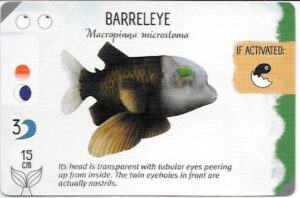
This small fish costs two eggs to play and it’s restricted to the Green Dive Zone. It will consume both of your starter eggs when played. Its brown power allows just you to hatch young, which won’t be possible until you’ve recovered your eggs. As a starter card, this fish seems very slow and expensive to utilize effectively. Its most notable quality is that it has the fourth-highest point total among the starter fish (three points). This is probably the least impactful starter card currently, and its best use may just be as discard fodder for your other fish.
9. Saddleback Butterflyfish
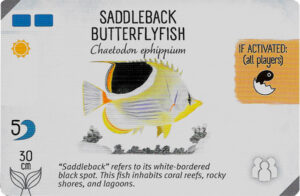
This small fish costs two cards to play, and it doesn’t reimburse them in any way. That makes it a fairly expensive fish for the early game. Its brown power allows all players to hatch an egg. This isn’t very impactful in the earliest stages of the game unless you need young to pay for certain fish or to make some progress toward a specific week goal. This fish’s most notable quality is that it has the highest point value among the starter fish (five points). Aside from that, its best use may just be as discard fodder for your other fish, recovering it to play later for its point value.
8. Longfin Batfish
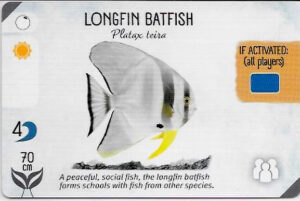
This medium fish is a bit dangerous in that it hands out cards to all players. Cards are the prime fuel for most of your fish plays, so this sharing power will probably help propel some higher-scoring games. Its most notable quality is that it is tied with Bonefish for the second-highest point value (four points) among the starter fish.
7. Bonefish
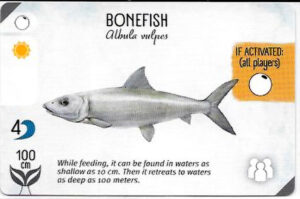
This medium fish costs a single egg, and its brown power hands out eggs to all players. After its first activation, it reimburses the egg used to play it. Handing eggs out to all players is not ideal, but that’s the price you have to pay to lay eggs outside of the Purple Dive Site. Bonefish is tied with Longfin Batfish for the second-highest point value (four points) among the starter fish.
6. Porkfish
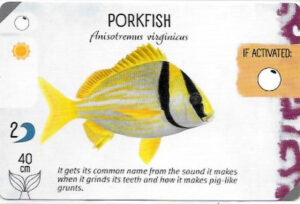
This small fish costs one egg to play, but it reimburses that egg as soon as its brown power is activated. Porkfish is restricted to the Purple Dive Site, so it’s a good way to jump-start some more aggressive egg-laying strategies. Unlike Bonefish, Porkfish only allows you to lay an egg, which is a good thing.
5. White-Banded Triggerfish
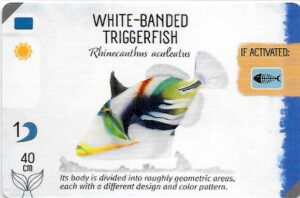
This small fish is worth only one point, and it costs a single card to play. Its brown power will let you recover that card after its first activation, making this fish cheaper than it may appear at first glance. Card recycling is an important element to playing a lot of fish over the long term, so this feels like a helpful power. It’s restricted to the Blue Dive Zone, but that feels like exactly where you want it to be anyway.
4. Smoothcheek Lanternfish
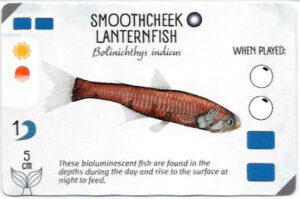
This small fish costs two cards to play, but it will allow you to draw two cards and lay two eggs when played. This makes it a net three-point fish for a net-zero card cost. That’s a lot of efficiency, cycling out your worst cards for two fresh cards off the top of the deck for a three-point play.
3. Blue Lanternfish
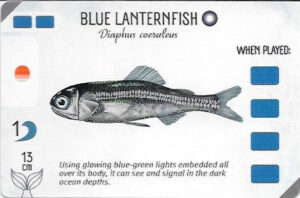
This small fish costs two cards to play, which feels a bit expensive, but then you get to draw four cards from its “When Played” power. This is a great way to filter out less desirable fish from your starting hand and dig deeper into the deck for more powerful options. Its strong card-drawing power is balanced out by its lower point value of a single point.
2. Orange Roughy
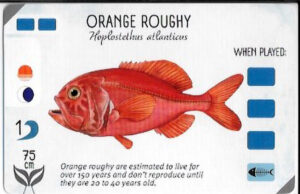
This medium fish is very similar to Blue Lanternfish in cost and function. However, instead of drawing four cards, you draw three and recover one from your discard pile. As a result, this fish costs a single net card to play, which is great. Its strong card-drawing power is balanced out by its lower point value of a single point.
1. Mandarinfish
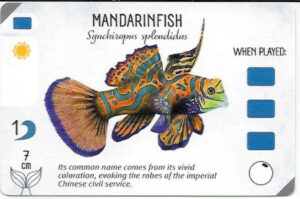
This small fish costs a single card to play, but its “When Played” power lets you draw three cards and lay one egg. You’re netting two cards after playing this fish, and it feels pretty powerful in practice.
You can discard a less desirable fish from your starting hand and try your luck for three better fish off the top of the deck. Its strong card-drawing power is balanced out by its lower point value, although it should be noted that this fish scores two net points when played, thanks to the egg it lays.
That concludes our Ranking of Finspan’s starter cards. If more are added to the game with future expansions, we will be updating our list. If you’d like to know more about Finspan, check out our review here, and be sure to check out Finspan by Stonemaier Games!

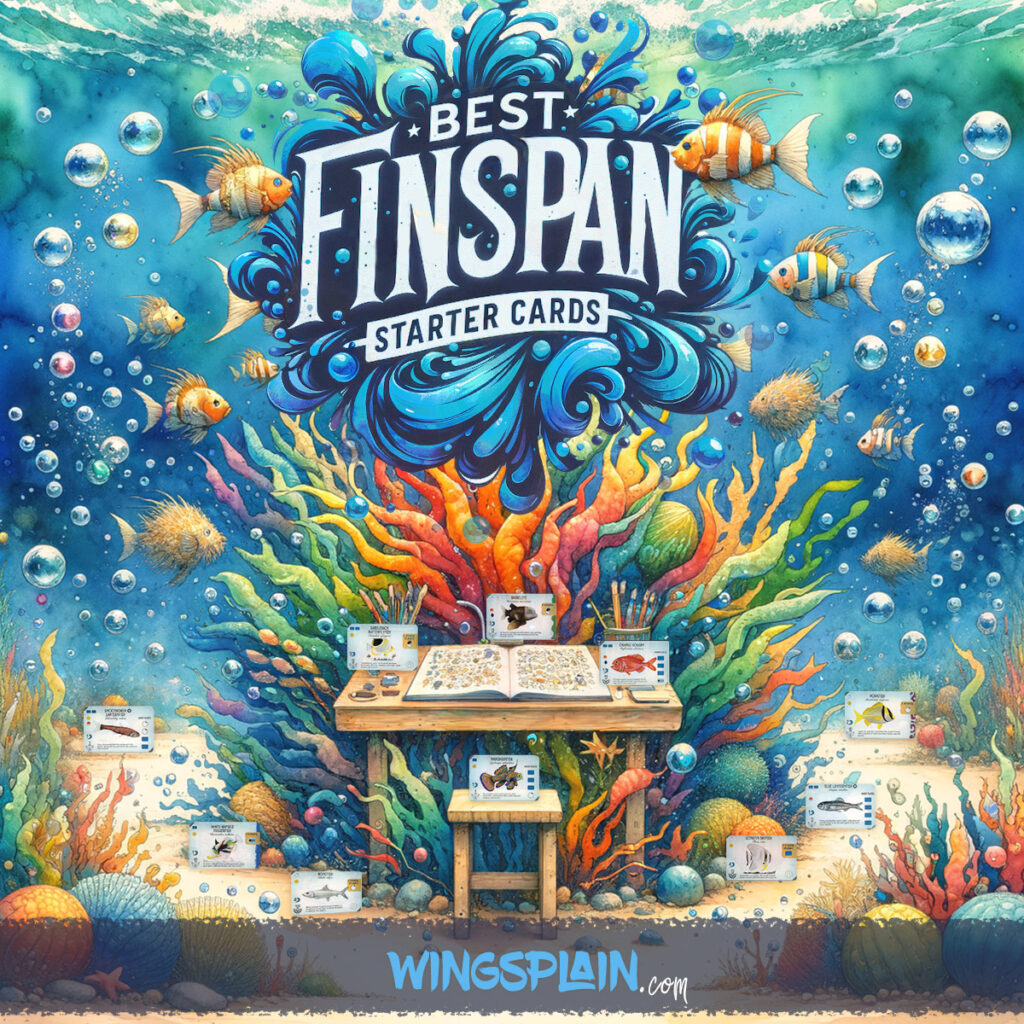
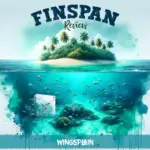

I did not realize that fish with abilities unrelated to their dive zone will have a tendency to give that benefit to all players.
There are some exceptions (Mahi-Mahi for example (seems really strong)), but it’s definitely a pattern. Moving young and schools seems to fall outside of the pattern.